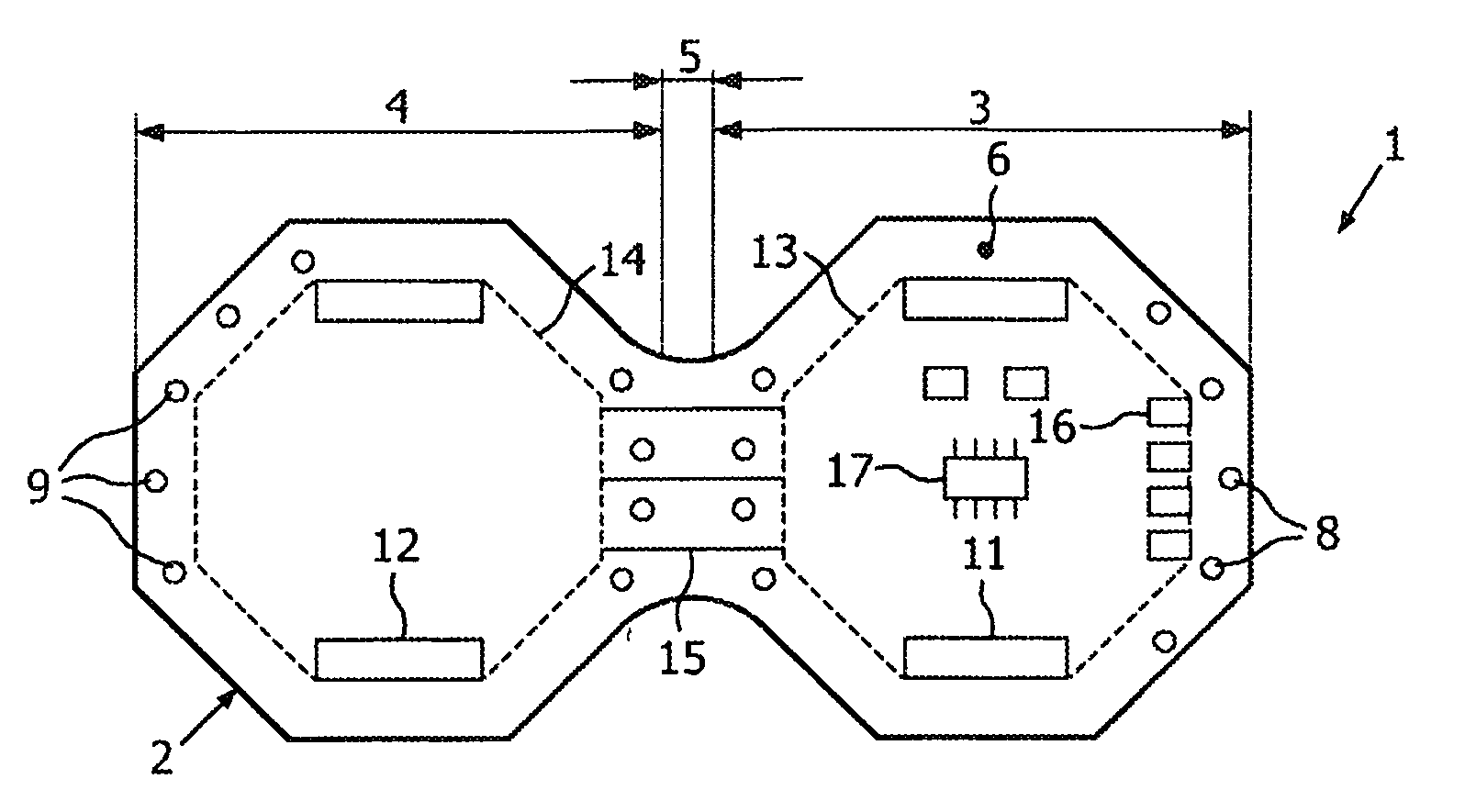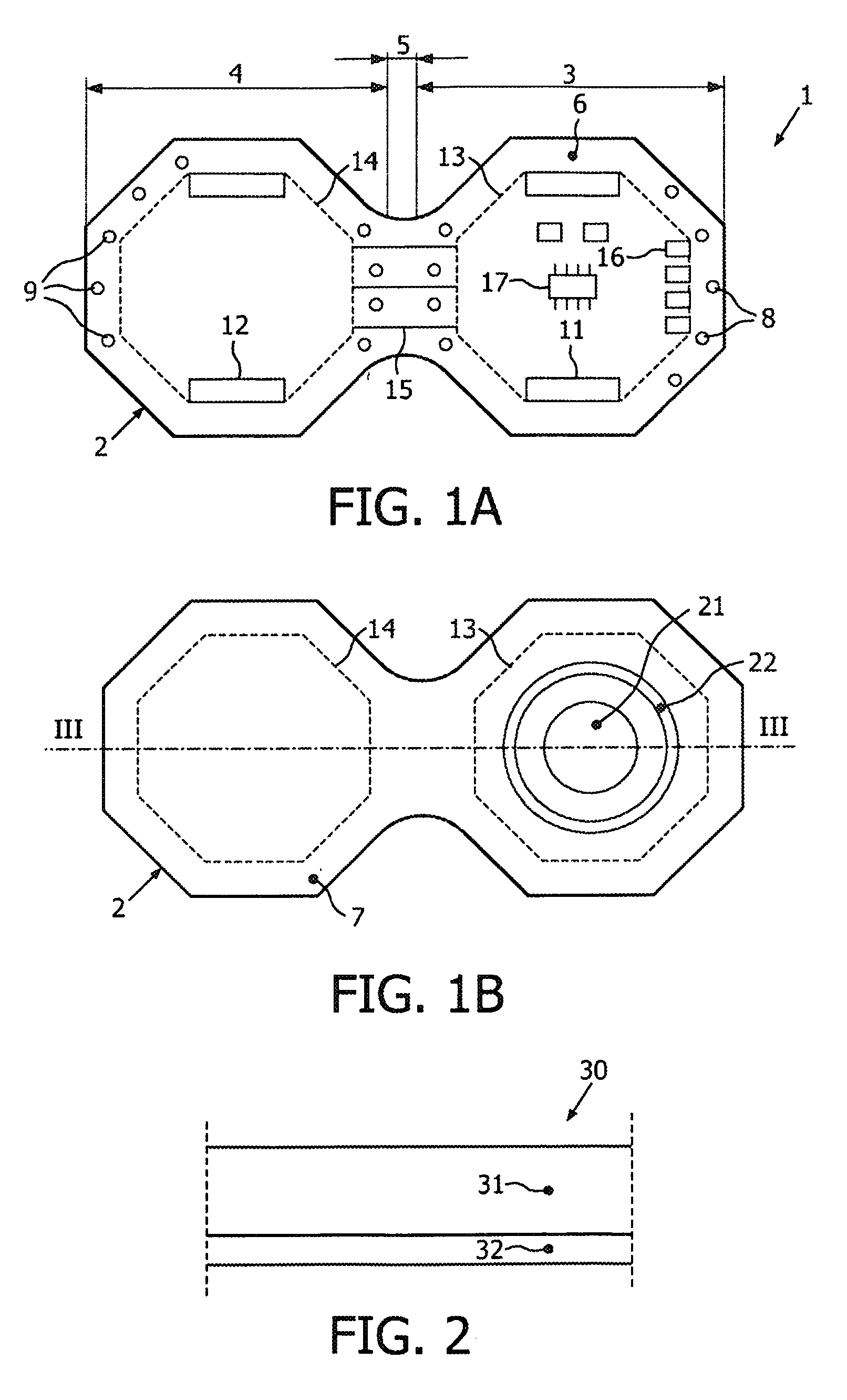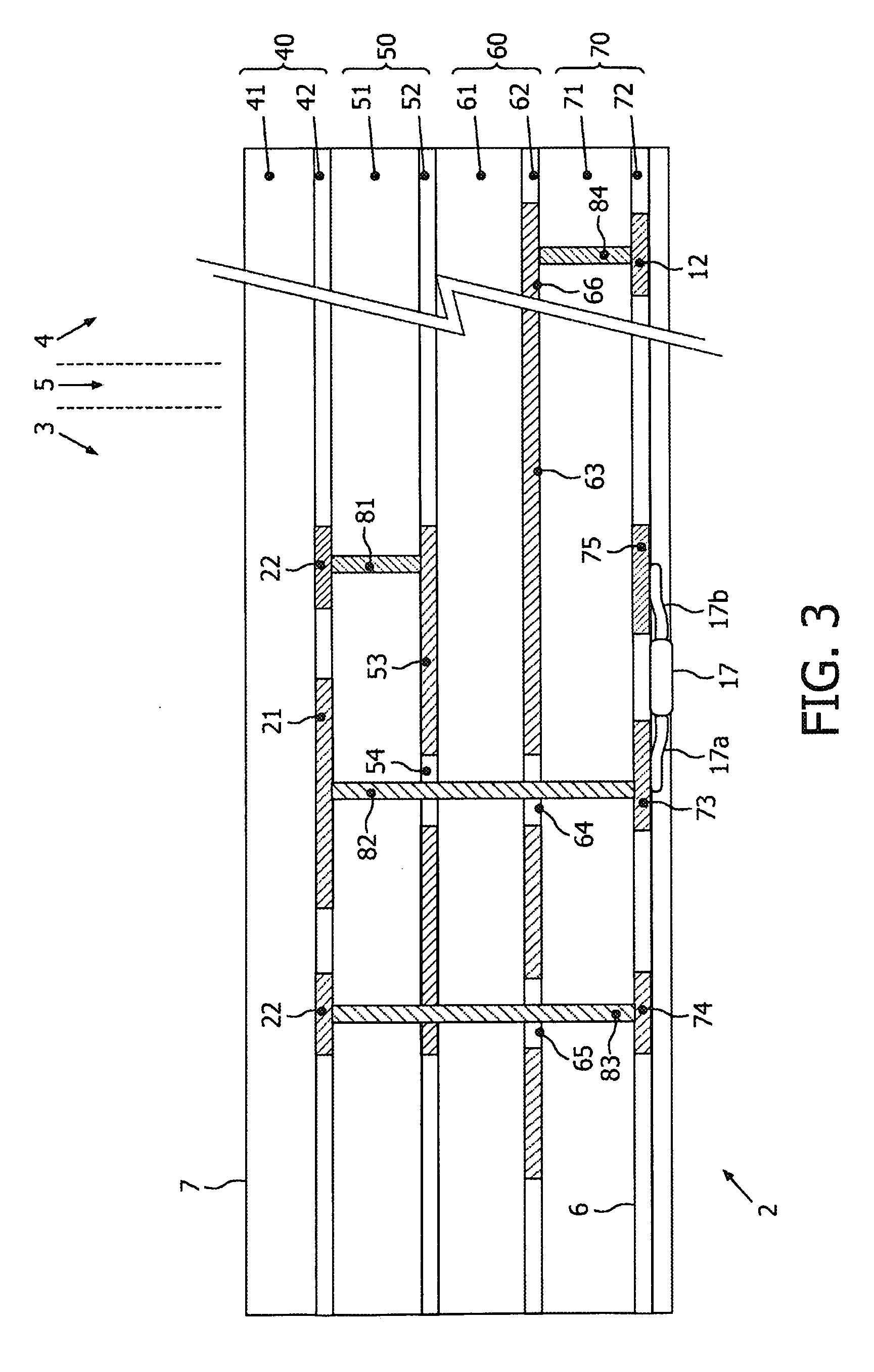Biometric Sensor
- Summary
- Abstract
- Description
- Claims
- Application Information
AI Technical Summary
Problems solved by technology
Method used
Image
Examples
Embodiment Construction
[0019]FIG. 1A is a schematic inside view of a preferred embodiment of a biometric sensor device 1 according to the present invention, and FIG. 1B is a schematic outside view of the same device. The sensor device 1 comprises a thin, flexible sensor body 2, comprising two wing parts 3, 4 attached to each other at a fold portion 5. The sensor body 2 has two opposite main surfaces, i.e. a first main surface 6 visible in the inside view of FIG. 1A, and an opposite second main surface 7, visible in the outside view of FIG. 1B. In use, the two wing parts 3, 4 will be folded together, such that the fold portion 5 takes the shape of a loop, and the first main surfaces 6 of the two wing parts will be facing each other; for this reason, the first main surface 6 will also be indicated as “inside surface”, whereas the opposite second main surface 7, which will be on the outside of the device when folded as mentioned, will also be indicated as “outside surface”.
[0020]The shape of the contour of t...
PUM
 Login to view more
Login to view more Abstract
Description
Claims
Application Information
 Login to view more
Login to view more - R&D Engineer
- R&D Manager
- IP Professional
- Industry Leading Data Capabilities
- Powerful AI technology
- Patent DNA Extraction
Browse by: Latest US Patents, China's latest patents, Technical Efficacy Thesaurus, Application Domain, Technology Topic.
© 2024 PatSnap. All rights reserved.Legal|Privacy policy|Modern Slavery Act Transparency Statement|Sitemap



